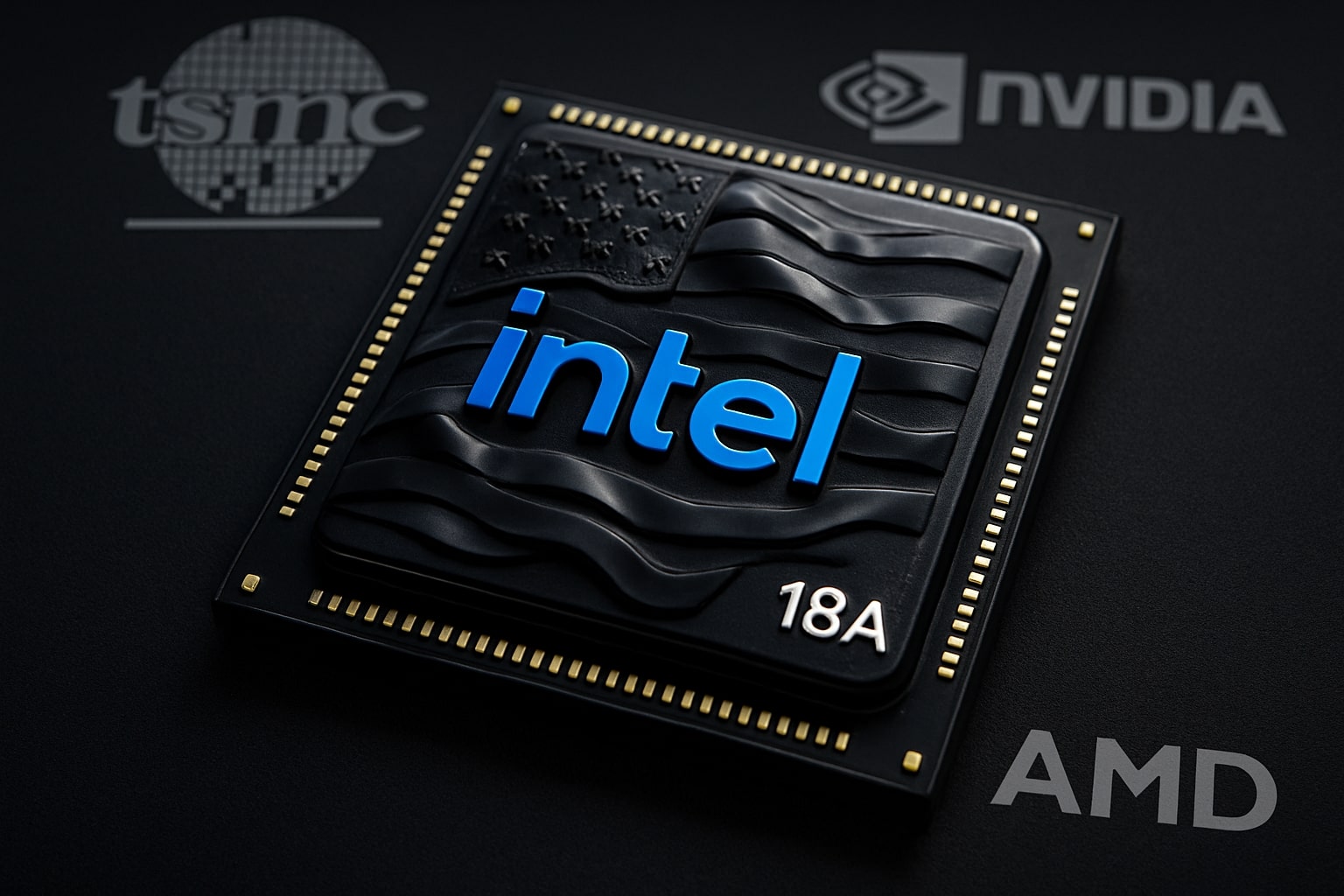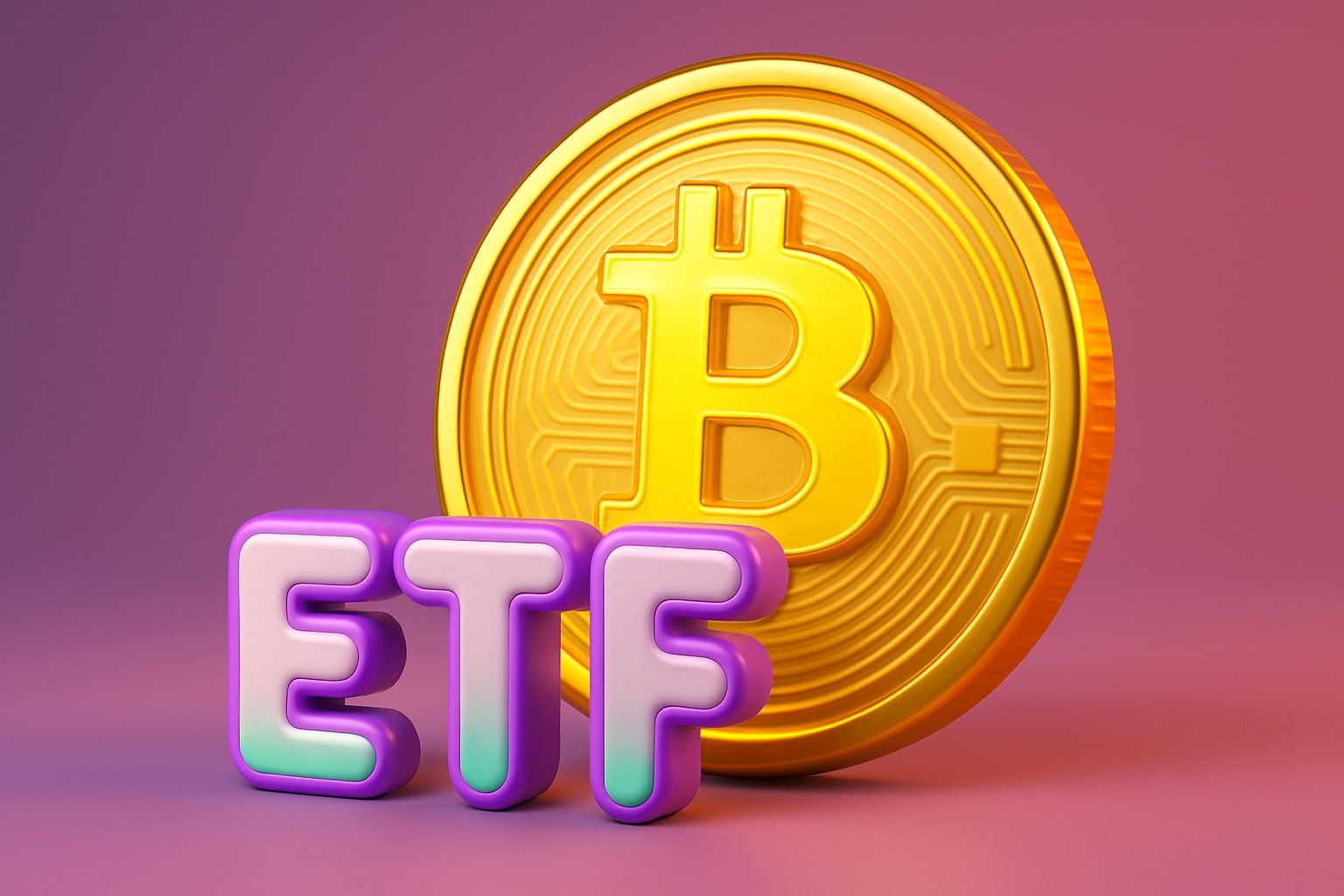
Intel Stock Price Forecast - INTC Shares Eyes $55 Target in 2026
Intel stock is forecast to reach $52–$55 in 2026. Strong cash reserves of $30.9B, rising EPS to $2.54, and renewed profitability position Intel as a long-term BUY in the global semiconductor race | That's TradingNEWS
Intel (NASDAQ:INTC) Surges Over 100% in 2025 as $15 Billion Strategic Funding, AI Foundry Expansion, and Leadership Overhaul Ignite Its Strongest Recovery in a Decade
Intel (NASDAQ:INTC) has become one of the most impressive comeback stories of 2025, climbing from $19.70 at the start of the year to around $39.78, marking a 103% YTD gain and outperforming most of the semiconductor sector. This sharp rally follows a structural transformation that combined government-backed investment, AI-foundry repositioning, and CEO Lip-Bu Tan’s deep cost realignment. After years of stagnation and production delays, Intel is no longer being viewed as a legacy manufacturer—it’s being redefined as a strategic national and AI-infrastructure asset with expanding relevance in the global semiconductor supply chain. The infusion of $15 billion in new capital has been the key catalyst that changed investor perception and restored balance-sheet strength.
Strategic Investments from the U.S. Government, Nvidia, and SoftBank Reinforce Intel’s National and Technological Role
Intel’s turnaround is anchored in an unprecedented alliance between public and private capital. The U.S. government converted $8.9 billion in CHIPS Act funding into a 10% equity stake, officially making Intel a semi-sovereign industrial pillar. This effectively places Intel at the core of the U.S. semiconductor defense and supply chain policy, a move that immediately boosted investor confidence and geopolitical relevance. Shortly after, Nvidia (NASDAQ:NVDA) invested $5 billion—an extraordinary step from a rival—to collaborate with Intel Foundry Services (IFS) for AI chip production and capacity diversification. SoftBank’s Vision Fund completed the trilogy with a $2 billion capital injection, specifically targeting Intel’s data center and foundry divisions. Together, these infusions strengthened Intel’s financial flexibility, bringing its cash reserves to $30.9 billion, up 28% year-over-year, and lifting total assets to $204.5 billion. The funding has allowed Intel to accelerate its 18A node development, now scheduled to reach competitive yields by Q4 2027, positioning it to rival TSMC’s 2nm process.
CEO Lip-Bu Tan’s Restructuring Drive Restores Profitability and Market Confidence
Under CEO Lip-Bu Tan, Intel’s management transformation has been radical and deeply data-driven. Tan initiated a sweeping cost overhaul targeting $10 billion in annual expense savings, downsizing the workforce by 20% to around 75,000 employees and streamlining non-core projects. The divestiture of a $4.46 billion stake in Altera, Intel’s FPGA unit, freed up liquidity that was reinvested into AI chip design and foundry automation. The payoff has been visible: Intel’s free cash flow turned positive at $4.59 billion in Q3 2025, up 259% year-over-year, marking its first positive reading since 2022. Gross margins improved to 44.8%, compared to 36.2% last year, reflecting a structural shift from cost compression to operational efficiency. Analysts note that the margin recovery demonstrates Intel’s ability to sustain profitability even amid declining PC sales, signaling that the new operating model is built for the long-term AI cycle, not just cyclical demand spikes.
AI-Focused Product Pipeline and Foundry Expansion Redefine Intel’s Market Relevance
Intel’s technological roadmap is now centered on AI compute, high-bandwidth accelerators, and scalable foundry production. The Gaudi3 AI accelerator, launched in mid-2025, delivered 38% higher performance-per-watt compared to the prior generation and positioned Intel as a credible alternative to Nvidia’s H200 and AMD’s MI350 series. Meanwhile, its foundry division secured long-term supply contracts with Amazon Web Services (AWS) and Microsoft Azure, both seeking to reduce dependence on TSMC. These agreements give Intel steady, multi-year revenue visibility and elevate its relevance in the cloud and AI infrastructure space. The company’s goal to capture 17% global foundry market share by 2027—up from the current 11%—is realistic given the combination of federal backing, cross-industry investment, and strategic partnerships with hyperscalers. Revenue from Intel Foundry Services rose 41% year-over-year, contributing meaningfully to Q3’s $15.4 billion data center segment revenue, its best since 2021.
Financial and Technical Strength Confirm Structural Recovery
Intel’s balance sheet and cash flow turnaround have restored Wall Street confidence in its sustainability. The company’s FY2025 EPS is projected at $2.54, up from $1.21 in 2024—an increase of 110%, with revenue forecasted to reach $65.3 billion, up 17% YoY. Institutional ownership surged from 59% to 68%, led by major hedge funds such as Bridgewater Associates, Citadel, and Renaissance Technologies, all expanding long exposure. The options market mirrors this sentiment, with open interest in $45–$50 call strikes for March 2026 up 22% in the last month. On valuation, Intel’s forward P/E ratio at 15.6x remains conservative compared to Nvidia’s 37.2x and AMD’s 29.5x, leaving room for multiple expansion as profitability stabilizes. From a technical perspective, INTC trades firmly in a bullish channel between $38.50–$41.00, with immediate resistance at $42.35, the early 2022 high. The 50-day moving average at $35.90 stands above the 200-day average at $30.40, confirming a positive long-term crossover. The RSI near 67 reflects strong but sustainable momentum, suggesting possible consolidation before a breakout toward $46.80–$48.00. Key support zones remain at $36.20 and $34.80, where institutional buyers have repeatedly stepped in.
Read More
-
SCHY ETF Price Holds $28.20 as Global Dividend Rotation Strengthens and Yield Reaches 3.62%
03.11.2025 · TradingNEWS ArchiveStocks
-
XRP ETFs XRPI and XRPR Slide 10% as Ripple Swell 2025 and SEC Decision Set Stage for $3.60 XRP Breakout
03.11.2025 · TradingNEWS ArchiveCrypto
-
Natural Gas Prices Surge to $4.16 as OPEC+ Policy and Winter Demand Drive Next Leg Higher
03.11.2025 · TradingNEWS ArchiveCommodities
-
USD/JPY Price Forecast - Yen Holds Near 154 as Japan’s Massive $92B Stimulus
03.11.2025 · TradingNEWS ArchiveForex
Macro Tailwinds and Policy Alignment Cement Intel’s Strategic Position
Intel’s resurgence is also macro-driven, aligning perfectly with U.S. industrial policy and global supply-chain diversification trends. The CHIPS and Science Act continues to channel billions into domestic fabrication, while escalating geopolitical risk in East Asia has amplified Intel’s appeal as a secure, U.S.-based manufacturing anchor. The U.S. Department of Defense recently expanded procurement agreements with Intel for advanced processors used in AI command systems, effectively securing another multi-year revenue stream. Meanwhile, TSMC’s production delays in Arizona and Samsung’s slower ramp in Texas further increase Intel’s leverage in the domestic fab race. The alignment between government policy, private capital, and commercial strategy provides Intel with a unique three-way growth engine not seen since its 1990s dominance.
Long-Term Outlook and Market Verdict
The market now views Intel (NASDAQ:INTC) as a structurally recovering asset rather than a short-term rebound. Its multi-phase transformation—cost compression, capital reinforcement, and AI-centric realignment—has restored credibility with institutional investors. The consensus among analysts points to target prices between $52 and $55 by mid-2026, representing roughly 35% upside from current levels. The long-term risk/reward ratio is increasingly favorable as the company approaches process parity with TSMC’s 2nm node and expands its role as a domestic foundry leader. With its AI infrastructure revenues accelerating, government equity support, and record liquidity position, Intel’s fundamentals and technicals converge in a way unseen in over a decade.
Verdict: BUY — Strong bullish bias with a 12–18 month target range of $46–$55, supported by structural turnaround, AI scaling, and national semiconductor leadership.


















